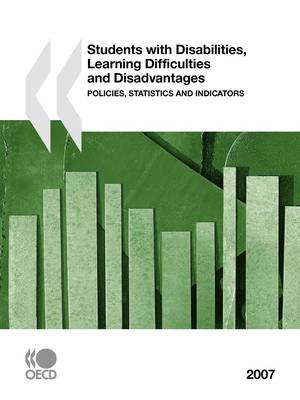
- Afhalen na 1 uur in een winkel met voorraad
- Gratis thuislevering in België vanaf € 30
- Ruim aanbod met 7 miljoen producten
- Afhalen na 1 uur in een winkel met voorraad
- Gratis thuislevering in België vanaf € 30
- Ruim aanbod met 7 miljoen producten
Zoeken
Students with Disabilities, Learning Difficulties and Disadvantages
Policies, Statistics and Indicators
Organization For Economic Cooperation and Development Oecd
Paperback | Engels
€ 62,95
+ 125 punten
Omschrijving
This book provides an internationally comparable set of indicators on educational provision for students with disabilities, learning difficulties and disadvantages (DDD). It highlights the number of students involved, where they are educated - special schools, special classes or regular classes - and in what phases of education - pre-primary, primary, lower secondary and upper secondary education. It also includes information on the physical provision and on student/teacher ratios and discusses policy implications concerning special education. This new edition also presents for the first time trends in the data for students with DDD from 1999 to 2003. This edition presents new quantitative and qualitative data for the school year 2002-03 in the following OECD countries: Belgium (Flemish and French Communities.), the Czech Republic, Finland, Germany, Greece, Hungary, Japan, Korea, Mexico, the Netherlands, Poland, the Slovak Republic, Spain, Sweden, Switzerland, Turkey, the United Kingdom (England) and the United States and in the non-member economy Chile. A strong and consistent finding is the preponderance of the number of boys over girls among DDD students in a wide range of analyses. Whether done by location, cross-national or national category, age of student, or phase of education, there is a higher percentage of males, typically a 60/40 split, across most OECD countries. Students with Disabilities, Learning Difficulties and Disadvantages: Policies, Statistics and Indicators will be of particular interest to policy makers and education experts looking for an internationally comparative framework on special education.
Specificaties
Betrokkenen
- Auteur(s):
- Uitgeverij:
Inhoud
- Aantal bladzijden:
- 234
- Taal:
- Engels
Eigenschappen
- Productcode (EAN):
- 9789264027626
- Verschijningsdatum:
- 9/05/2008
- Uitvoering:
- Paperback
- Formaat:
- Trade paperback (VS)
- Afmetingen:
- 210 mm x 279 mm
- Gewicht:
- 541 g

Alleen bij Standaard Boekhandel
+ 125 punten op je klantenkaart van Standaard Boekhandel
Beoordelingen
We publiceren alleen reviews die voldoen aan de voorwaarden voor reviews. Bekijk onze voorwaarden voor reviews.











